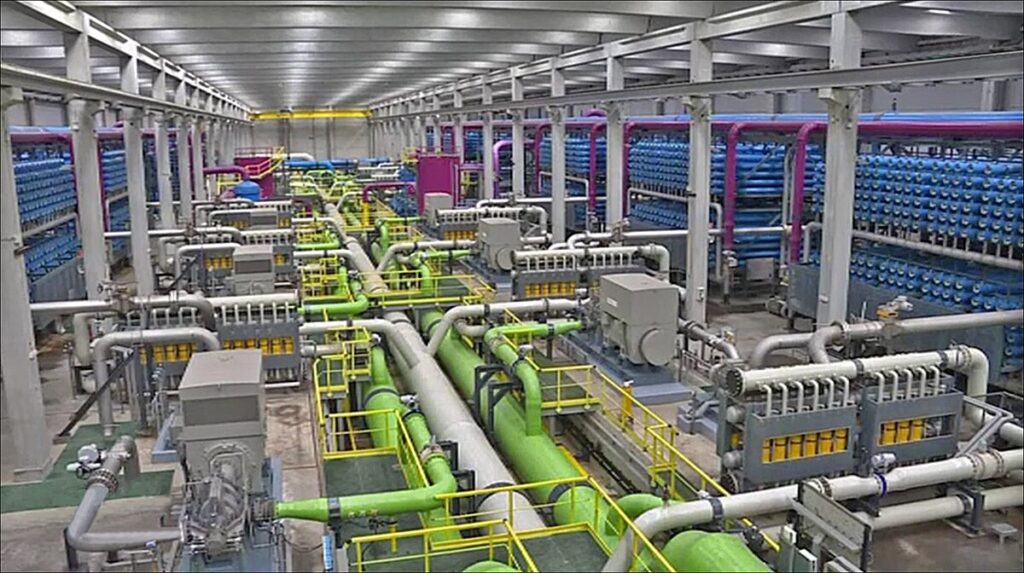A German research team has investigated the feasibility of a large-scale PV-driven PV-driven inverted Osmose discontinatory installation in Jordan and has discovered that keeping the Concentrate Stroom constant is the most suitable disasters-working mode.
Researchers from Germany have investigated the technical and economic feasibility of a PV-driven large-scale seawater inverted Osmosis (SWRO) desalination installation that was designed to work in Jordan based on a variable business curve after the PV stream profile, while also electricity Imports from the schedule.
“We have chosen the operating strategy with variable speed because it allows faster and more precise adjustments to the delivery of renewable energy supply in comparison with modular operation,” the group explained. “This is achieved by keeping all factory units operational, so that the need is to prevent units being flushed or eliminated during the availability of low energy.”
The modeling was developed in Python and analyzed with an hourly resolution. The desalination installation was based on the plans of the AQABA Amman Water Disalination and Conveyance Project (AAWDCP), which is expected to be operational by 2030/2031. It is intended to descend water from the Red Sea, in the south of the country, and to transfer it via a route from pumping stations and regulating the reservoir over a distance of 435 km, with a height profit of 1,398 m.
In their analysis, the Academics De SWRO linked with a PV factory in the Ma’an region of the country. They assume that the plant uses PV modules with a capacity of 460 W and an efficiency of 18.28%, installed on a tracking system with one axis. In the first scenario investigated, the SWRO dismantling installation adjusts to a PV factory that wants to achieve the highest possible use of solar energy, with an installed PV capacity of 89.2 MW. The second case focuses on maximizing the availability of water production, with an installed capacity of 587.5 MW.
“Different business modes are possible within the safe work window of Reverse Osmosis (RO) membranes for SWRO dismantling installations that work with variable speeds,” the academics explained. “In particular, four operational modes are considered suitable: maintaining constant nutritional pressure, recovery, nutritional current or concentrate current. However, constant nutrient pressure and recovery speed work modes are detrimental due to their narrower operational reach and higher energy consumption than the constant nutritional current or concentrate current business modes. “
Image: RWTH Aachen University, desalination, CC by 4.0
The researchers decided to concentrate on the constant foodstream mode, which ensures that the flow of seawater that enters the RO membranes remains constant, while the pressure is adjusted to match the available power; And the constant concentrate -straw mode, which ensures that the current of concentrated brine remains constant, while nutrition current and pressure are adjusted based on the availability of power.
“The constant concentrate stream mode is more effective in the use of PV power, with a 5% higher energy efficiency and 306 hours more operating time, especially given the energy needed for extra seawater pumps,” the scientists emphasized. “Moreover, the Concentrate current supports a stable flow regime for energy recuperations, which minimizes the risk of mixing concentrate and nutritional flows as a result of temporary uneven flow rates.”
The analysis also showed that the production speed is only 31% to 33% of the design capacity of the installation compared to a desalination installation that continuously works with a production speed of 97%. “That is why the allowance of a PV current surplus helps to increase water production in the oversome PV energy plant, although only to a point that is determined by the availability of solar energy. With an increased PV capacity of 587.5 MW, the simulation results indicate a maximum production speed of approximately 47% for both operational modes, ”the team added.
The researchers also discovered that desalination and water transport from AQABA to Amman, operated according to the photovoltaic power profile, around 2.5 $/m3 cost 46% availability of water production, compared to 1.8 $/m3 in full load with a 46% photovoltainsch Power Share. “In addition, increasing the photovoltaic wealth share to 72% is feasible with the pumping of water, whereby any increase of 1% in photovoltaic wealth share adds approximately 0.02 $/m3,” they concluded.
Their findings were presented in “Photovoltaic desalination of seawater through reverse osmosis and water transport for the benefit of the transition from the green energy in the middle East“Published in Desalination. Academics of German RWTH Aachen University, the German International Cooperation Society (GIZ) and Step Consulting have conducted the study.
This content is protected by copyright and may not be reused. If you want to work with us and reuse part of our content, please contact: editors@pv-magazine.com.
Popular content


